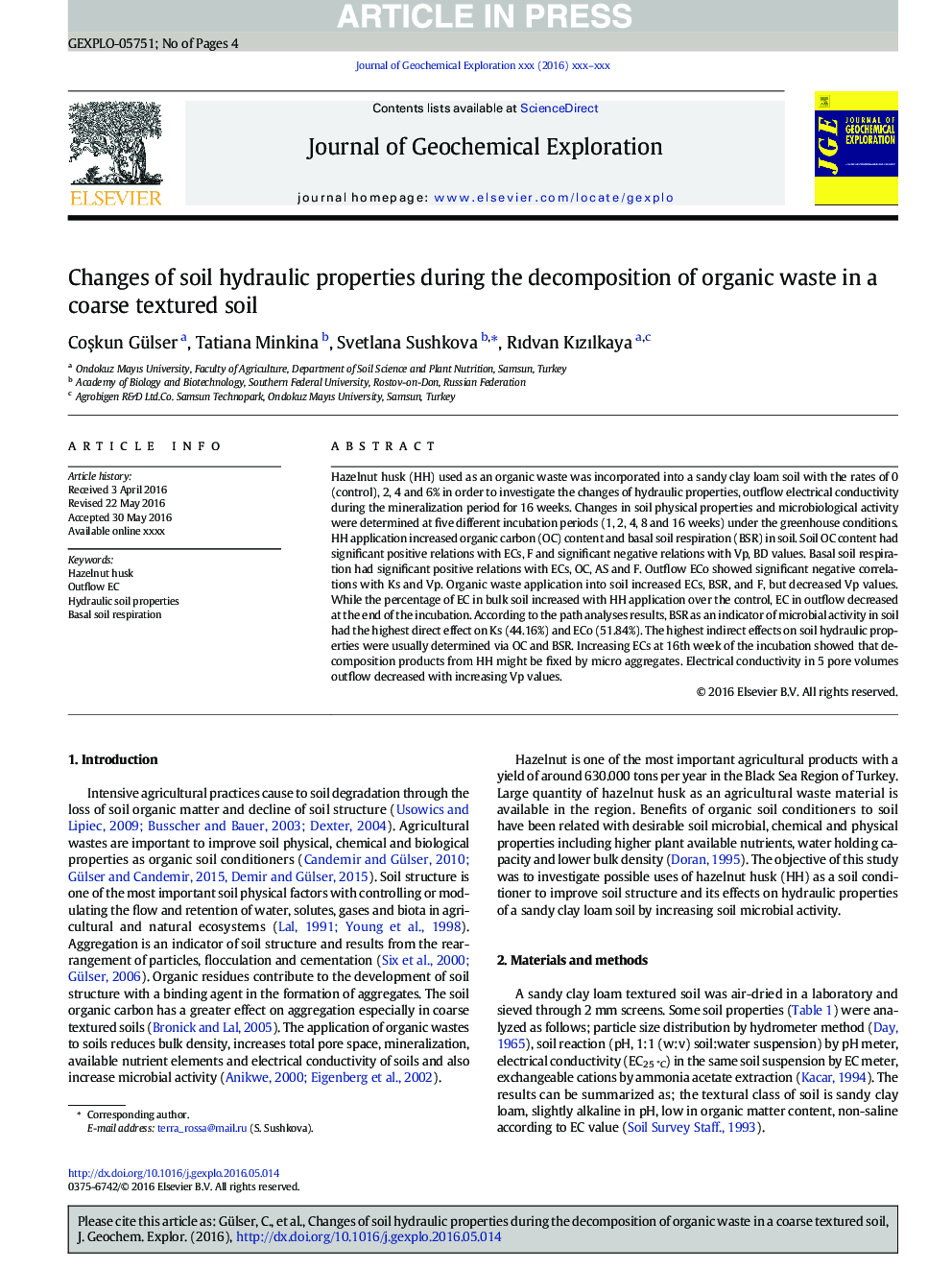| Article ID | Journal | Published Year | Pages | File Type |
|---|---|---|---|---|
| 5754492 | Journal of Geochemical Exploration | 2017 | 4 Pages |
Abstract
Hazelnut husk (HH) used as an organic waste was incorporated into a sandy clay loam soil with the rates of 0 (control), 2, 4 and 6% in order to investigate the changes of hydraulic properties, outflow electrical conductivity during the mineralization period for 16Â weeks. Changes in soil physical properties and microbiological activity were determined at five different incubation periods (1, 2, 4, 8 and 16Â weeks) under the greenhouse conditions. HH application increased organic carbon (OC) content and basal soil respiration (BSR) in soil. Soil OC content had significant positive relations with ECs, F and significant negative relations with Vp, BD values. Basal soil respiration had significant positive relations with ECs, OC, AS and F. Outflow ECo showed significant negative correlations with Ks and Vp. Organic waste application into soil increased ECs, BSR, and F, but decreased Vp values. While the percentage of EC in bulk soil increased with HH application over the control, EC in outflow decreased at the end of the incubation. According to the path analyses results, BSR as an indicator of microbial activity in soil had the highest direct effect on Ks (44.16%) and ECo (51.84%). The highest indirect effects on soil hydraulic properties were usually determined via OC and BSR. Increasing ECs at 16th week of the incubation showed that decomposition products from HH might be fixed by micro aggregates. Electrical conductivity in 5 pore volumes outflow decreased with increasing Vp values.
Keywords
Related Topics
Physical Sciences and Engineering
Earth and Planetary Sciences
Economic Geology
Authors
CoÅkun Gülser, Tatiana Minkina, Svetlana Sushkova, Rıdvan Kızılkaya,
